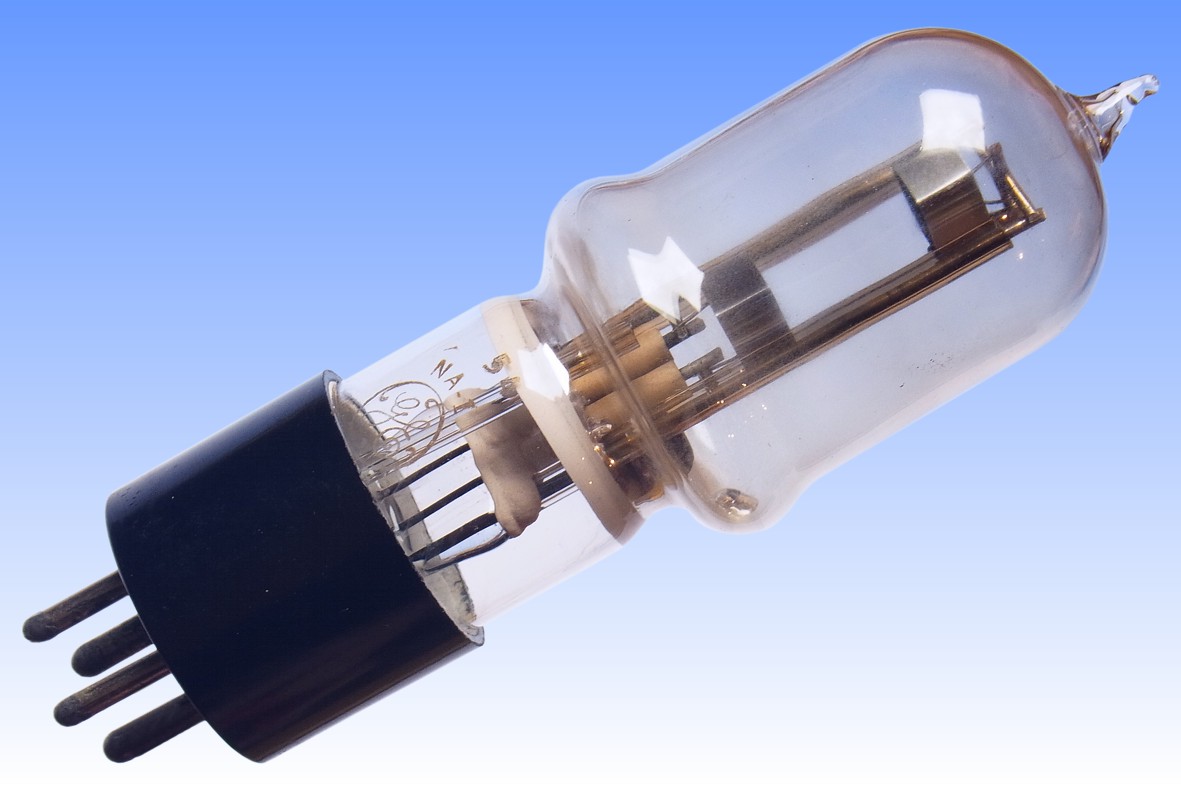
|
GE NA-1 Sodium Vapour Lab-Arc |

The lamp is a short-arc low voltage type, similar to the earlier Philips DC Polarimeter lamp but for AC use. It requires preheating of the tungsten coil cathodes, before the discharge is struck in a neon-argon mixture and then carried by molybdenum anode plates. Instead of using 2-ply sodium-resistant glass, American sodium lamps are unusual in that they use ordinary borosilicate glass with an inner protective glaze of crystalline borosilicate. This shows excellent resistance to sodium, and can be recognised by the diffuse appearance. To protect the glass-to-metal seals, these are made in a lower bulb separated from the main discharge vessel by a mica plate sealed with ceramic paste. A glass tube connects the two bulbs, its diamter being narrow to reduce the mean free path of sodium atoms and reduce their rate of diffusion into the lower bulb. Sodium dosing was effected by exploding a small glass 'bomb' inside the main bulb during the exhaust stage. This had been previously filled with sodium under vacuum and was exploded by heating with an RF induction oscillator.
It must be operated in a heat-conserving dewar vacuum jacket. These were marketed along with a special luminaire and control gear by the George W. Gates laboratory supply company (type SLA-5C). Many lamps also bear a label as Gates type G5CL. They were discontinued in 1972.




| Manufacturer: | General Electric Company, U.S.A. | |
| Lamp Power: | 28 Watts | |
| Lamp Current: | Discharge 4.0 Amps | Cathodes 2x 2.5 Amps |
| Lamp Voltage: | Discharge 6.5 Volts | Cathodes 2x 1.5 Volts |
| Cap Type: | UX4 | 4-pin Valve |
| Bulb Type: | TB-38 | TB-12 in eighths/inch |
| Bulb Finish: | Diffuse | Borosilicate with glaze |
| Electrodes: | Coiled-Coil Tungsten | BaO emitter |
| Arc Length: | 17.5 mm | 11/16 inch |
| Atmosphere: | Na | NeAr | |
| Luminous Flux: | 650 lm | |
| Luminous Efficacy: | 23 lm/W | |
| Colour Temperature & CRI: | CCT: 1800K | CRI: Ra -43 |
| Chromaticity Co-ordinates: | CCx: 0.565 | CCy: 0.430 |
| Rated Lifetime: | Approx 500 hours | |
| Warm-up & Re-strike time: | 15 minutes | Instantaneous |
| Burning Position: | Vertical cap down | |
| Overall Length: | 136 mm | 53/8 inches |
| Light Centre Length: | 82.5 mm | 31/4 inches |
| Factory: | Hokoken, N.J. | U.S.A. |
| Date of Manufacture: | July 1960 | Date Code 54 |
| Original / Present Value: | US $15.00 | (1933) |
